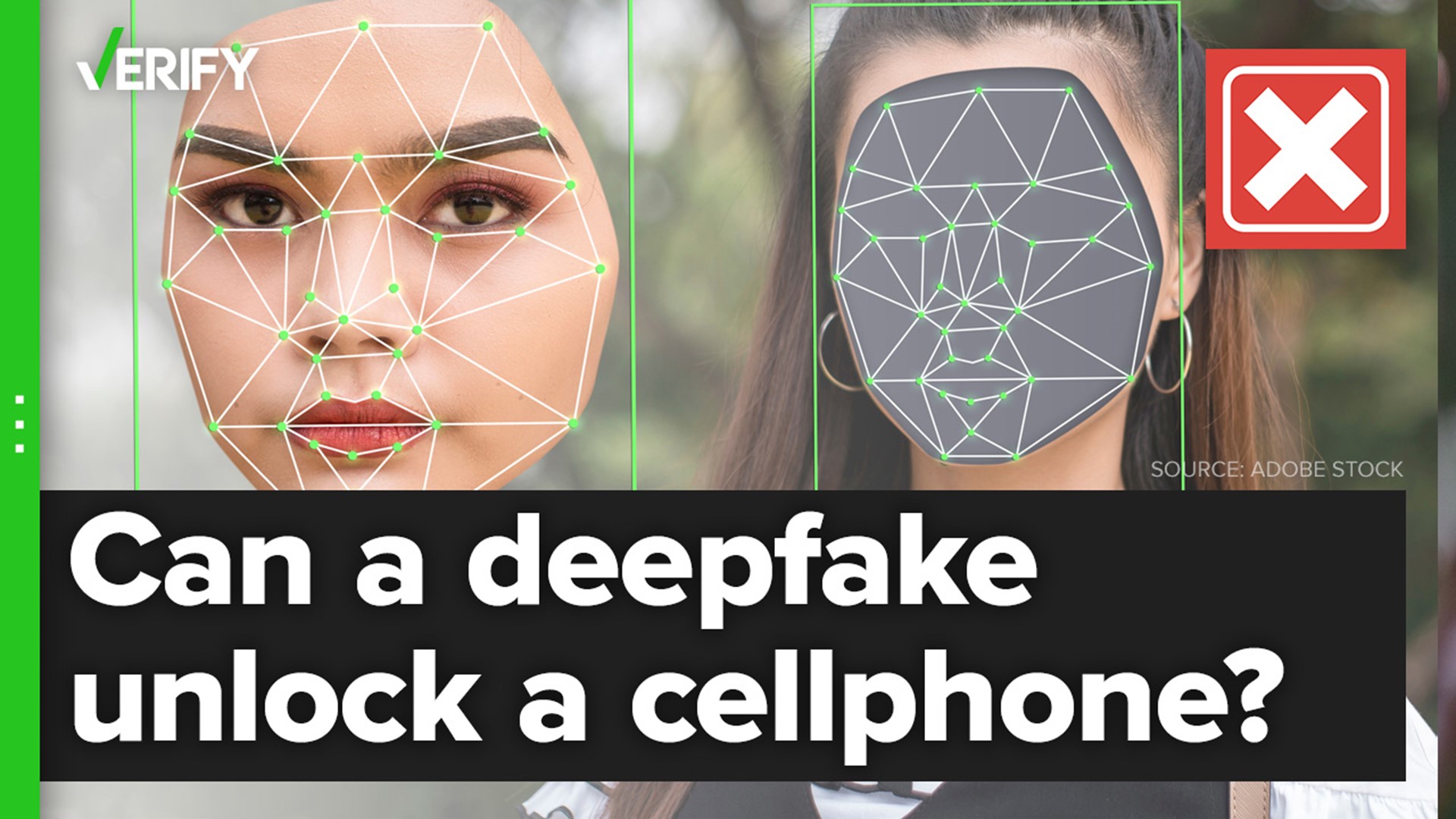Deepfakes, manipulated images or videos that duplicate or digitally alter a face or body, are becoming more popular – and have been used in the spread false information online.
Some altered media may seem harmless, like videos that appear to show celebrities performing stunts. Other times, there could be a nefarious intention behind this content -- like when a world leader's likeness is copied for political or propaganda purposes.
But, is the technology so advanced that it could, in effect, steal someone’s identity and unlock a personal device? An article from Science Focus asked that question, and some have claimed deepfakes could unlock a phone and a person’s identity could be stolen.
THE QUESTION
Can a deepfake unlock a device that uses facial recognition?
THE SOURCES
THE ANSWER
No, a deepfake can’t unlock a smart device that uses facial recognition. These devices use 3D, biometric technology that a deepfake wouldn’t be able to replicate.
WHAT WE FOUND
Deepfakes are made using artificial intelligence technologies that can replace or synthesize faces, speech or expressions of emotions.
Deepfakes can be created using images or previously recorded videos of the subject. For example, this deepfake of Ukraine President Volodymyr Zelenskyy was created using images lifted from his previous press conferences, but his head and body were manipulated to fabricate a speech he never made.
RELATED: No, the video of Ukrainian President Zelenskyy urging surrender isn’t real. It’s a deepfake
Though deepfakes can be deceptive to the naked eye, they’re not advanced enough to fool facial-recognition software. Deepfake videos and images are two-dimensional, which is why they can’t be used to unlock a smartphone, like an Android or Apple device.
Face ID, the technology Apple created that enables facial identification, captures “accurate face data by projecting and analyzing thousands of invisible dots to create a depth map of your face and also captures an infrared image of your face.” Infrared technology helps your phone's camera capture facial features that might not be visible to the naked eye.
“Face ID automatically adapts to changes in your appearance, such as wearing cosmetic makeup or growing facial hair. If there is a more significant change in your appearance, like shaving a full beard, Face ID confirms your identity by using your passcode before it updates your face data. Face ID is designed to work with hats, scarves, glasses, contact lenses, and many sunglasses. Furthermore, it's designed to work indoors, outdoors, and even in total darkness,” Apple’s website says.
Samsung also says it uses similar technology that scans and maps a face on their devices. Some of Google’s phones use facial recognition technology the same way.
Siwei Lyu, Ph.D., director of the UB Media Forensic Lab at SUNY Buffalo and a deepfake expert, told VERIFY that mapping and biometric technology is what keeps deepfakes from being able to unlock devices.
“What the [deepfake] algorithm cannot do is create a 3D presence. And that is what is used for unlocking an iPhone,” Lyu said. “That three-dimensional information is what the fake algorithm currently cannot recreate.”
Lyu said at present, the only way for someone to be able to unlock a smartphone with facial recognition is if they were able to 3D print someone’s face, but each contour, movement and facial landmark - like where your nose lines up on your face - would have to be identical.
Lyu added a deepfake mostly refers to digital media instead of a physical object. So, if someone were to attempt to create 3D rendering of a person’s face in order to steal their identity, it would not be treated as a deepfake but instead a face spoofing, like a clone.
More from VERIFY: How to spot manipulated videos, including deepfakes and shallowfakes

